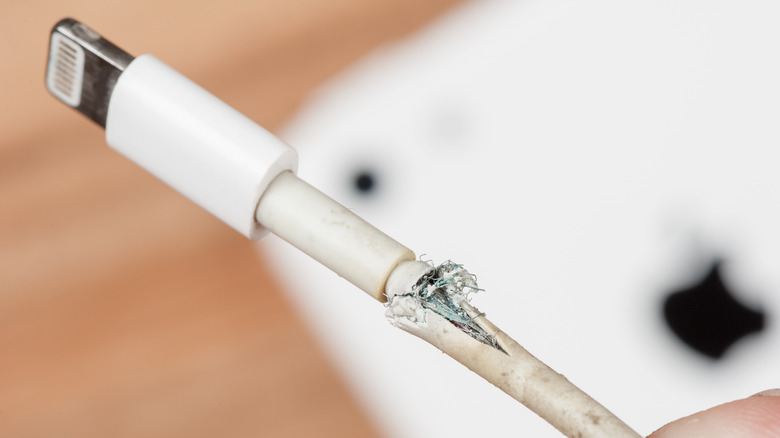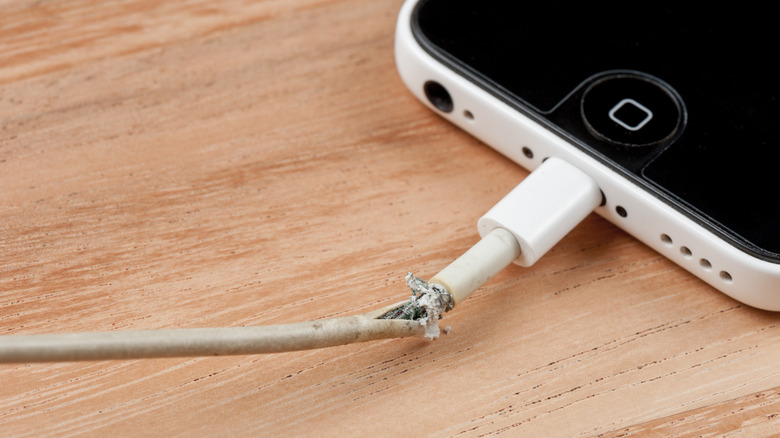The Reason Why Apple Charging Cables Break So Often
When you get right down to brass tacks — an electrical plug's prongs, that is — charging cables not only tether a phone to the nearest wall socket but handcuff the on-the-go end user as well. And when those octopean cables fray all too quickly, as has been the knock on Apple's power cords for some time now, the whole business tends to wear down the nerves of even the most die-hard Apple eaters.
So why does a company long-known for its meticulous attention to detail skimp on the one thing that supplies the go-go juice to its most precious iProduct? There are two reasons, actually: one is sure to anger the legion of Apple adherents, while the other should supplicate them because it emphasizes being more eco-friendly. Way to balance the scales, Apple.
A video released by Apple Explained says that in the mid aughts, the Apple design team ultimately felt that the ribbed strain reliefs that helped with stability and longevity cables were ugly. The video noted, "Apple's engineering team knew the cable would suffer from higher failure rates, but the change was implemented regardless."
A greener Apple for all
According to Apple Explained, the company's design team is the last stop in a product's decision-making process, and in this case, they felt the bulky ribbed couplings were like maggots burrowing through their apple. It no longer fit the sleek aesthetic of an iProduct. Thus, the ribs were ditched for a sexier, more streamlined connection ... but it was also flimsier, weaker, and less resilient.
Despite engineers knowing that chargers could fail, they went ahead and made the change anyway, causing countless cries of frustration and plenty of dollars to flow into Apple's coffers as consumers were forced to buy cord after cord after cord.
But here's where the decision is more agreeable: Earth-friendly reasoning comes into play. Around the same time Apple ditched the plastic ribbed couplings, former CEO Steve Jobs led the charge to make Apple a greener, more environmentally friendly company. It began creating more recyclable products by removing toxic materials like Arsenic, PVC, BFR, and Mercury (via Apple Explained).
Due to its strength and durability, PVC (or Polyvinyl Chloride) is one of the world's most widely used plastic polymers, but it's also very toxic (via Greenpeace). When Apple got rid of PVC, it began using a much weaker rubber material, further degrading the cords' durability.
Thankfully, Apple has been releasing a much sturdier woven braided cord with some of its newer products recently. It took a while, but maybe the proverbial apple didn't fall too far from the tree after all.

